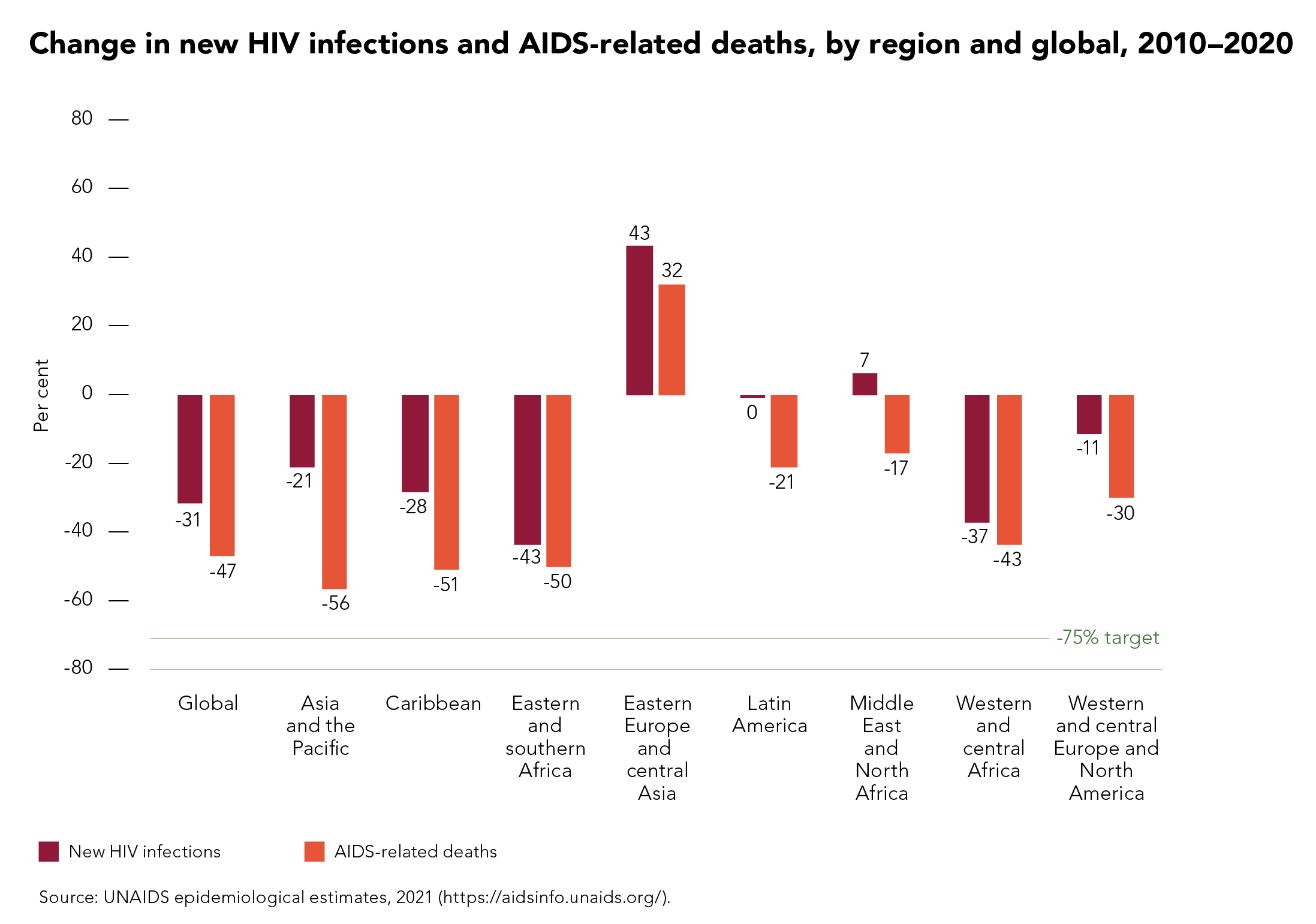While the global roll-out of HIV treatment has saved millions of lives, efforts to prevent new HIV infections have been less successful. The annual number of new HIV infections among adults globally has hardly changed over the past four years, and total new infections have declined by just 31% since 2010, far short of the 75% target for 2020 that was set by the United Nations General Assembly in 2016.
Too many countries have failed to put in place the combination of structural, behavioural and biomedical approaches to HIV prevention focused on those at greatest risk that experience shows has the maximum impact. Consistent condom use, although possible, has proved difficult to achieve among all populations: women in many countries, for example, need greater agency and support to negotiate consistent condom use. Coverage of pre-exposure prophylaxis and of voluntary medical male circumcision in 2020 also were well below the targets set five years earlier.
Reductions in new infections were strongest in sub-Saharan Africa and the Caribbean, but no region achieved the 75% declines that were agreed by the United Nations General Assembly in 2016. Epidemics in large parts of eastern Europe and central Asia expanded in the face of serious legal and policy barriers and inadequate attention to the needs of people who inject drugs and gay men and other men who have sex with men. The annual number of new HIV infections also climbed in the Middle East and North Africa, and Latin America did not achieve any reduction in infections over the course of the last decade.







